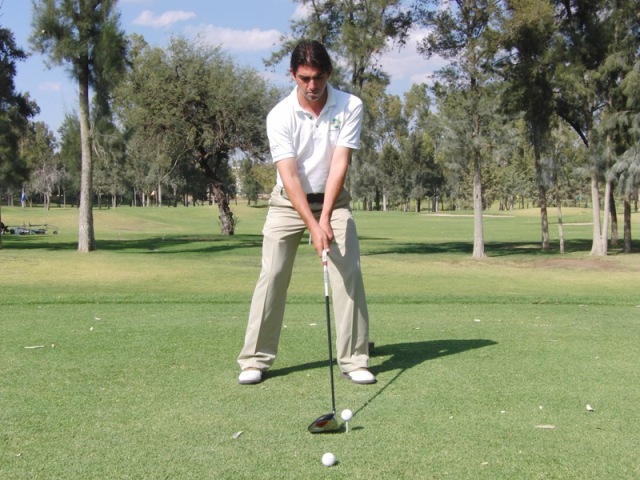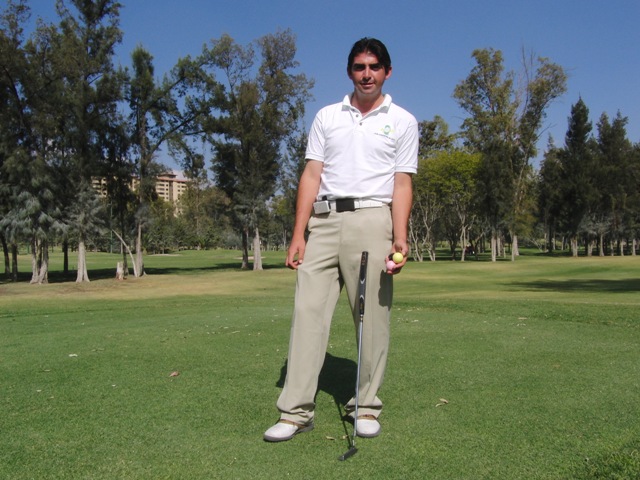
Talking in the 19th Hole
DRIVER. The reasons a player has for participating in a tournament are different, including:
– Win the competition.
– Be within the top three of their categories.
– Pass the cut. – Win a closest to the pin.
– Get a prize in the raffles.
– Have fun with your friends.
– Enjoy the events of the Tournament.
– Improve your social and business relationships.
– For being a sponsor.
– For commitments with the family.
Regardless of their motives, everyone in their heart of hearts would like to win or perform well. Let’s see some recommendations that can save you some strokes:
Know the conditions of the competition. In this document, you will find the information related to the tournament. It is the responsibility of each player to know and comply with the Conditions of the Competition. You will avoid penalties and even disqualification if you take the time to read this document. It will also save you time deciding on Rules situations, as you will not need to call the Rules judge.
Make sure you carry a maximum of 14 clubs. For different reasons, some players have more than 14 clubs in their bag and forget to take out the extra clubs when playing the tournament, for which they receive penalties that hurt more than missing a gimmie.
Follow the same routines. The recommendation is that you play with the routines that you have established, regardless of what they are. Many players change their habits during the tournament. For example:
– In their regular rounds, they don’t practice before playing, but they hit many balls in the tournament.
– In the putt, they usually see the break only from behind, but they see it on all four sides in the tournament.
– In a typical round, if they fail, they accept it as part of the game, but in the tournament, they want the caddy to tell them why they failed.
Have and keep a focus on the swing. You can have a move or keyword for your swing and the different shots. For example, on the full swing: turn your shoulders, and on the putt: accelerate. If you miss, you have to stay focused on these points, but players want a class from their caddy for each missed shot.
Each shot requires your attention. Many shots are missed or end where you don’t want them due to simple distractions, for example:
– Finishing a putt of less than a yard without doing the routine or taking the correct set up.
– Finish in OB or a penalty area for failing to check the wind direction.
Focus on your game. Instead of focusing on their game, some players waste their energy getting into the game of others. This behavior ends up affecting your game and turns your tournament into an unpleasant experience.
Sing the score for each hole. The recommendation is that when you hole you say your score, for example, I made four. It is preferable to say the number, because if you say: I bogey, your scorer may confuse the par for the hole and score you a different score. Some players have a bad habit of carrying a draft scorecard and eventually pass it on to the original. The correct conduct is to record the score on the original scorecard for each hole. Delivering a scorecard with a score lower than the actual one is one of the most frequent reasons why a player is disqualified.
The use of the cell phone. In the conditions of the competition, you will find the restrictions on the use of cell phones. The recommendation is that you turn it off during the round because it may cause you to lose concentration. If necessary, to make or receive a call, schedule it to make it crossing from hole 9 to 10.
The Updown. Golf is similar to a roller coaster because of the ups and downs during the game. The objective is to last the shortest time possible in the lower part, for example:
– If you make a bad shot, the next one is good.
– If you make a wrong decision, let the next one be good.
– If you play a nasty hole, the next one is good.
– If you play a terrible day, the next one is good.
– It is essential to use the head in intelligent decision-making and mind control to achieve it.
Do not take the first holes to warm up. Some players take a few holes to get into the game, so they tend to do very uneven rounds, for example, 49 and 41. The tournament starts from the first hole, and the first hole counts the same as the other 17.
Get enough rest. In tournaments that last for several days, players tend to abuse the social theme: they spend drinks and fall asleep late. It is difficult for them to perform well the next day. Some are even disqualified because they are late due to not being able to get up on time.
Rescue the round. If your swing is not on a good day, you should not abandon your commitment to reach the score range that you have established. There are several ways to rescue the day, for example:
– Play with a more compact swing and use an extra club.
– Minimize damage from missed shots, playing even more in the safe area.
– If you are hitting fat shots, play the ball a little back. If you’re slicing, close the clubface a bit.
– Pay more attention to the short game to save pars and bogeys.
If any of these recommendations help you save a hit, my effort will have served its purpose.
IRONS. W In my childhood and youth, when I worked as a caddy, there was a behavior that no longer exists today, the player gave you the watch, the wallet, the car keys, the cigarettes, the bag of balls, the balls to play, and finally his most prized possession: the putting ball. This ball was considered special; the players claimed that it was «the ball of luck.»
Players believed that their magical powers emanated from their color: there were yellow, orange, and black, among others. Their powers were also attributed to the outstanding achievements made with them. Its appearance was opaque due to being used for years since changing it meant a risk. When it was necessary to change it, the ball was kept in the locker.
The custom of changing the ball on the green has practically disappeared, but some players are probably still over 70 who do. However, there is a custom that could not be changed: the mulligan. The mulligan is the repetition of a shot. The mulligan is allowed in most clubs, on the first hole.


Using the putting ball and hitting the mulligan violates the Rules. The 1.1 Rule that says: “Golf is played in a round of 18 (or fewer) holes on a course by striking a ball with a club. Each hole starts with a stroke from the teeing area and ends when the ball is holed on the putting green”. Rule 6.3a confirms this principle: A player may play any conforming ball when starting a hole from the teeing area and may change balls between two holes. The player must hole out with the same ball played from the teeing area, except when: that ball is lost or comes to rest out of bounds, or the player substitutes another ball (whether or not allowed to do so).
Thus, it is established that one ball is played, not two. The USGA museum offers some stories about the birth of the term mulligan. The term is attributed to golfers with the last name Mulligan, on the one hand, David Mulligan from Montreal and on the other to John Mulligan from New Jersey. Both players repeated the missed shots in the teeing area. His peers are believed to have coined the term, although there is no evidence to support these stories.
Ideally, players should avoid the mulligan. If the player is used to hitting a ball on the first hole, it will be easier for him to hit a good shot on the first stroke of a competition. Clubs should establish the no mulligan at least on weekends and holidays. This would help expedite tee times.
PUTTS. A renowned club in Mexico City recently had a sinister where dozens of golf carts were burned. Years ago, something similar had happened in a club in the Bajío. These fires send clear messages to the other clubs:
– Ensure that the electrical installation of the golf carts warehouse is correct.
– Know and respect the limit of golf carts that the electrical installation supports.
– The maintenance area improves its supervision of the golf cart area.
– Acquire an insurance policy for the golf carts that are stored in the Club.
– Get involved in the golf cart area’s operation due to the value of the assets that are managed there. FORE.
